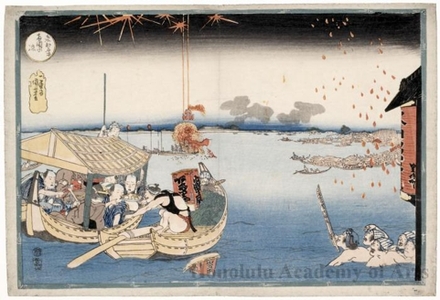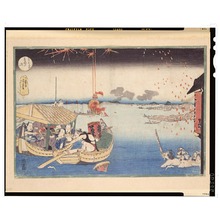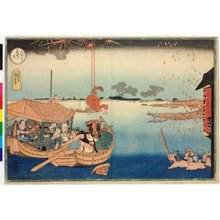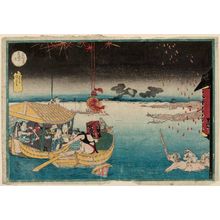歌川国芳による浮世絵「Evening Cool at Ryögoku」
作者:歌川国芳
作品名:Evening Cool at Ryögoku
制作年:c. 1830 - 1834
詳細:詳細情報...
情報源:ホノルル美術館
浮世絵(全 5,476 件)を表示...
説明:
Unlike better-known prints portraying idealistic images of fireworks at Ryögoku Bridge by his contemporary Hiroshige, Kuniyoshi here offers a more realistic depiction of Edo commoners’ lives. In this print, people on a pleasure boat buy food from a nearby vendor on another boat. On the right, a group of men are wading in the water. They are religious practitioners hoping to purify themselves by “washing off” this world’s corruption and impurities. There is an implied contrast between these two scenes, since the people on the left seem devoted to mundane pleasures while those on the right contemplate the vanity of the floating world. “Midsummer Night’s Pleasure” 08/05/2010-10/10/2010) ********************** Another form of popular entertainment that developed in the Edo period was the use of fireworks. The Portuguese introduced fireworks in the 16th century. Their popularity grew after shogun Tokugawa Ieyasu put on a display in 1613. Fireworks were commercially produced and frequently used by common people as summer entertainment. Certain varieties were also sold as toys for children. The Sumida River display in Tokyo became especially famous after the first presentation in 1733. Fireworks also increased the risk of fire in Edo, where closely packed houses made of wood and paper were extremely flammable. (2008)



